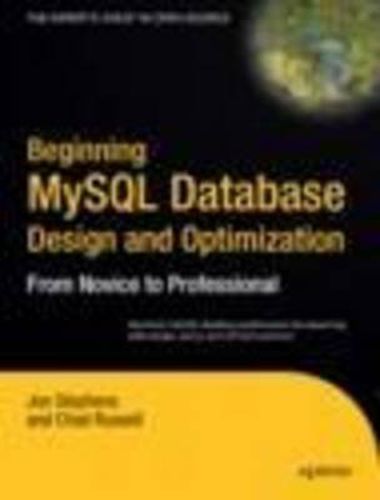Readings Newsletter
Become a Readings Member to make your shopping experience even easier.
Sign in or sign up for free!
You’re not far away from qualifying for FREE standard shipping within Australia
You’ve qualified for FREE standard shipping within Australia
The cart is loading…






This title is printed to order. This book may have been self-published. If so, we cannot guarantee the quality of the content. In the main most books will have gone through the editing process however some may not. We therefore suggest that you be aware of this before ordering this book. If in doubt check either the author or publisher’s details as we are unable to accept any returns unless they are faulty. Please contact us if you have any questions.
Nearly every non-trivial application requires data persistence, and for an application of any significant size and scope, persistence is typically realized using a database. For open source and many other projects, the MySQL database is a very popular choice: it’s free; it’s fast, robust, and scalable; and it runs on all of the major platforms, allowing maximal use of available hardware resources. However, it’s easy to throw away My SQL’s speed and other advantages if your database design is inefficient. Needlessly duplicating data, using improper types for columns, overloading a single table where multiple tables should be used, failing to leverage the calculation features of MySQL, and making multiple queries instead of efficient, single query are some of the common mistakes.MySQL Database Design and Optimization, shows you how to identify, overcome, and avoid gross inefficiencies, and demonstrates how to maximize the many data manipulation features that MySQL has built-in. MySQL Database Design and Optimization explains how to include tests and branching in your queries, how to normalize your database, and how to issue concurrent queries to boost performance, among many other design and optimization topics. If you’re building or maintaining any significant application and are using MySQL, this book is for you.
$9.00 standard shipping within Australia
FREE standard shipping within Australia for orders over $100.00
Express & International shipping calculated at checkout
This title is printed to order. This book may have been self-published. If so, we cannot guarantee the quality of the content. In the main most books will have gone through the editing process however some may not. We therefore suggest that you be aware of this before ordering this book. If in doubt check either the author or publisher’s details as we are unable to accept any returns unless they are faulty. Please contact us if you have any questions.
Nearly every non-trivial application requires data persistence, and for an application of any significant size and scope, persistence is typically realized using a database. For open source and many other projects, the MySQL database is a very popular choice: it’s free; it’s fast, robust, and scalable; and it runs on all of the major platforms, allowing maximal use of available hardware resources. However, it’s easy to throw away My SQL’s speed and other advantages if your database design is inefficient. Needlessly duplicating data, using improper types for columns, overloading a single table where multiple tables should be used, failing to leverage the calculation features of MySQL, and making multiple queries instead of efficient, single query are some of the common mistakes.MySQL Database Design and Optimization, shows you how to identify, overcome, and avoid gross inefficiencies, and demonstrates how to maximize the many data manipulation features that MySQL has built-in. MySQL Database Design and Optimization explains how to include tests and branching in your queries, how to normalize your database, and how to issue concurrent queries to boost performance, among many other design and optimization topics. If you’re building or maintaining any significant application and are using MySQL, this book is for you.